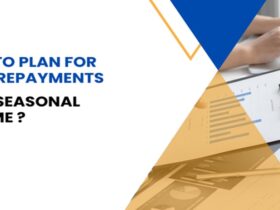Financial audits examine organisational processes and statements to verify compliance and accuracy in financial reporting. But given increasingly complex business environments, traditional audit techniques face limitations revealing certain misstatements or non-compliance involving judgmental fraud risks, inventory gaps, etc – crucial aspects impacting investor trust and brand reputation.
This is where an infusion of targeted forensic consulting introduces specialist scrutiny that can upgrade quality, transparency, risk insights and even uncover savings.
This article examines four compelling benefits of integrating forensic expertise within audit engagements along with relevant techniques employed.
Augmented Assessment of Fraud Risks
Despite the existence of internal controls, fraud risks still necessitate focused attention from auditors considering potentially crippling financial and reputational damages upon materialisation.
However, traditional auditing procedures covering high-level walkthroughs, substantive sampling, etc, grant limited fraud detection capability beyond easier cases like duplicate payments. Further enhanced scrutiny is warranted for audit quality.
Forensic specialists fill this gap by conducting detailed fraud risk assessments through:
- Process Deep Dives: Granularly analyse key transactions, accounting and reporting processes end-to-end, encompassing authority limits, system access logs, approval hierarchies, etc. Deploy flowcharting and system modelling tools to map controls and red flags.
- Targeted Interviews: Confidentially consult management across functions on perceived opportunities and motivators for misconduct based on role pressures, incentive structures, and office culture.
- Fraud Scheme Cataloging & Testing: Reference databases of common financial statement fraud typologies to tailor tests searching warning signs – like revenue cut-off testing to uncover premature recognition practised to inflate top line, etc.
Skilled forensic auditors assess inherent psychology, pressures and rationalisation attitudes across functions to gauge likelihoods better, enabling auditors to refine engagement focus areas towards addressing susceptibility even before fraud occurrence.
Improved Inventory Audit Assurance
For companies carrying sizeable inventory balances, assessing existence and valuation constitutes a high-risk audit area needing thorough verification to contain misstatement risks from gaps, damages, obsolete stock, etc.
However, traditional inventory audit procedures like roll forward reconciliations, examination of subsidiary records, etc, grant partial insights, still warranting physical verification for conclusive determination, given documentation alone isn’t a foolproof guardrail.
But continuous wall-to-wall stock counting proves highly disruptive for operations. It impairs auditor assurance on full inventory without exhaustive counting as they rely on sampling alone due to cost-benefit tradeoffs.
That is where focused Inventory forensic tests by specialised consultants upgrade assurance through procedures like:
- Stock Segregation: Perform surprise checks on warehouse segments containing fast-moving, slow-moving and damaged stock, appraising the consistency of the storage approach assumed during planning.
- Stock Card Analytics: Compute key inventory cycle time, variance and turnover metrics across items to detect outliers deviating from expected ranges that warrant counting audit.
- Unpicked Sales/Purchase Order Review: Cross-verifies records of unfulfilled demand against physical floor stocks, searching for symptoms of stock leakage or phantom reporting.
- Production Reconciliation: Interrogate systems to ensure post-production stock absorption matches input raw material and yield variances within controlled norms, signalling no leakage.
Forensic specialists thus conduct deeper desk reviews of thrift records, combining analytics, visual validation and targeted physical verification to improve inventory audit assurances beyond statistical samples.
Enhanced Visibility into Contract Risks
Revenue and procurement cycles relying extensively on contractual dealings pose complex audit risks from unrealistic commitments, unfavourable terms, dispute risks, etc., and impending financial health.
Standard audits examine a few randomly sampled contracts with a focus limited to validating reported current-year crystallised impact rather than interpreting future risks from contractual clauses. Further, experts are needed to decode warnings hidden in legal wordings that hold material damage potential.
Forensic contract experts fill this gap using cognitive techniques:
- Comprehending Contract Structures: Map portfolio contractual models across customers and suppliers, identifying risk patterns in pricing models, delivery terms, payment cycles, dispute resolution, etc.
- Monitoring Negotiation Trends: Analyse past contracted terms over a timeline to detect creeping unfavourable concessions against the company in aspects like pricing, fees, quality enforcement, etc.
- Analysing Counterparty Risks: Evaluate track records of major customers and vendors in areas like default rates, litigation history and financial stability to assign risk scores indicating future unreliability that necessitates intervention.
- AI-Based Text Mining: Scan specific contract corpus to uncover logically unintended verbose combinations across scattered sections posing operational or financial hazards until legal review.
Such forensic contract analysis provides strategic insights for legal, procurement and sales teams towards negotiating improved future terms, dispute minimisation procedures and counterparty risk assessment – thereby preventing deal structuring lag from escaping audit visibility until downstream damages manifest years later.
Targeted Detection of Corruption Risks
While most organisations mandate a strong tone against bribery through a code of conduct, corruption risks continue plaguing several operations, especially in more prevalent international jurisdictions.
Standard audits have a limited reference baseline to detect isolated incidents of kickbacks or fraud buried within legitimate high-volume expenses like commissions, procurement, consultancy payments, etc, when no violation trends are noticeable from the past.
This is where focused forensic testing helps investigate corruption likelihood around areas like:
- Third-Party Vetting: Scrutinise the background of key agents, intermediaries and consultants enforcing stringent risk metrics covering ownership structures, politically exposed persons, reputation in the industry, etc.
- Travel and Expense Reviews: Analyse reimbursement patterns of employees in sensitive roles for notorious locations, outlier expense heights, durations, etc.
- Service Provider Background Analysis: Test for connections of vendors and suppliers to company employees or their circles through citizenship scans across wider family networks searching conflict of interest risks.
Conclusion
Infusing specialised forensic consultation with an investigative lens offers a strategic avenue to fortify quality, derive actionable risk insights, upgrade functional processes, and ultimately nurture long-term resilience.
The ROI should sufficiently justify additional involvement when considered against severe penalty costs both on financial and reputational dimensions in case critical threats get undetected from traditional audit limitations before the disaster. By investing in deeper visibility, organisations reinforce pillars supporting achieving strategic objectives.







